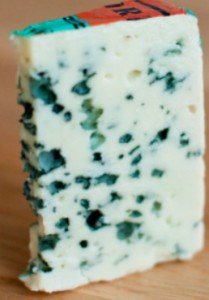There is a lot of cheese in France. Incredibly lots of very good cheese, so to pick five standard-bearers is next to hopeless and not possible without doing injustice to some. These are cheeses that are both excellent and famous “osteperler”, but no hidden gems, and they are all on my list of personal favourites. However, there are others as well on my personal list. But these five cheeses below are some that you probably both know and have tasted. If not, it is high time you try them out.
Beaufort
A surprise to find Beaufort on the list and not Comté? Comté is probably more famous, and if you are served cheese in France I am pretty sure Comté is one of the cheeses you are served. Comté is by far the most popular cheese in France, any style. But in my opinion Beaufort from Savoie is better and more exclusive. Fantastically tight texture, slightly crystallised. Moderately sweet and fine, nutty taste. Aroma of grass and herbs, especially the summer and mountain editions. Fascinating as well, that one cheese, weighing about 45 kilos, requires the day production of milk from 45 cows. Easy production planning at least, 45 cows give one cheese a day, 90 cows give two. From raw milk of course and quite available, at least from cheese mongers. Matured for a minimum of five months, but oftentimes longer. The last one I tasted was a Chalet d’alpage matured for 24 months. Almost indescribable. A Vin Jaune from Savoie is a fine paring. Is has a touch of flor to it.
Epoisses
Epoisses. For the connoisseur, this one. From Burgundy. Stinky and sticky as the Brits would say. Very typical for soft or semi soft washed rind cheeses. Munster is an other one, from Alsace. But now it’s all about Epoisses.

I always buy the raw milk variety, as this cheese might both be made from raw or pasteurised cow’s milk. Comes in a round wooden container. Epoisses is a fine cheese, washed in brine and Marc de Bourgogne. Smell is opulent, while the flavours are quite mild. Meat is a word that strikes me when I taste it, windfall as well. This is a fine cheese to pair with some northern Burgundy reds.
Crottin de Chavignol
The list has got to include a chèvre, of course. There’s a few to choose from to say it the least. This one is from the Berry province in Loire, perhaps the area mostly associated with chèvre. Like most other chèvre the taste differs a lot from young to matured. Turns drier as it matures. Mostly consumed young while it is moist and with fine acidity and flavour is more delicate. As it matures it develops a touch of blueing on the outside, which is normal. Sancerre with this one, on the balcony at sunset a mild summer evening.
Roquefort
Probably one of the most famous French cheeses, if not the most famous often called the King of (the) Blues. Only raw ewe’s milk. From the Midi-Pyrénées, or Occitanie as it has been for a while.

There are seven producers of Roquefort and my personal favourite is Carles. One of the small producers.
Roquefort is matured for three to nine months in the limestone caves at Mont Combalou in Roquefort-sur-Soulzon. Important to note that it does not have to be made there, only matured. That does not mean it could be made anywhere. The area from which milk can be collected has been narrowed quite a lot as the AOP regulations have been revised. Very salty and savoury. Of fall the blues the Roquefort is the saltiest, in my my opinion at least. Could be the reason a glass of Sauternes pairs so well. Texture is something between soft and crumbly, and at times towards soggy. Melts on your tongue. There is a lot of fine blues out there, but there is something special with Roquefort.
Vacherin du Haut-Doubs
Some other time of year, and it could be an other cheese as my fifth choice. A cult cheese from the French Jura, and Swiss as well, but I prefer the French as it is made from raw cow’s milk.
In popular speech is is called just Mont d’Or irrespective of it being French or Swiss. The correct name of the French variety is Vacherin du Haut-Doubs. The most common size comes in a wooden box. What’s so fantastic with this cheese is if you heat it for a while you have a ready single portion fondue. Into the oven at 180 degrees centigrade for 25 minutes. Voila! Pair it with a white Burgundy or Chardonnay from the Jura where it comes from.

Now you’ve got a small cheese plate. The odd man out regarding wine is the Roquefort, the others can work very well together with one wine, preferable white. So have yourself a glass of Sauternes with the Roquefort. Well deserved.